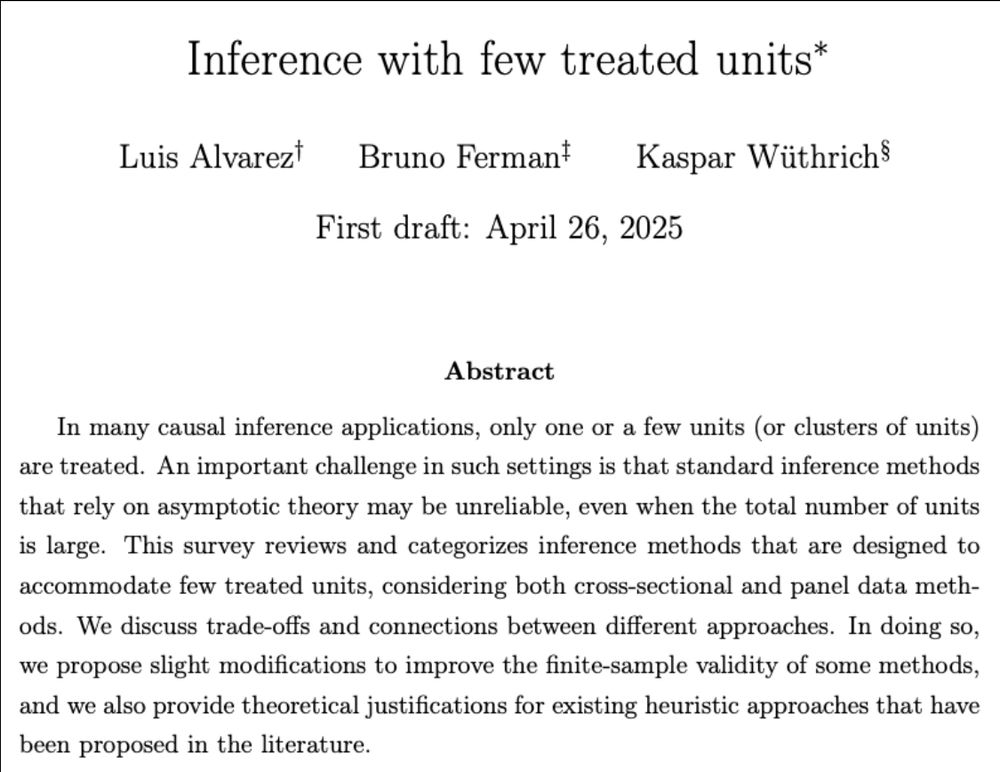Bruno Ferman
@brunoferman.bsky.social
990 followers
260 following
19 posts
Professor at Sao Paulo School of Economics - FGV
Econometrics/Applied Micro/affiliate @JPAL
MIT Econ PhD
https://sites.google.com/site/brunoferman/home
Posts
Media
Videos
Starter Packs
Pinned
Bruno Ferman
@brunoferman.bsky.social
· May 1
Reposted by Bruno Ferman
Reposted by Bruno Ferman
Bruno Ferman
@brunoferman.bsky.social
· May 1
Bruno Ferman
@brunoferman.bsky.social
· Apr 29
Bruno Ferman
@brunoferman.bsky.social
· Apr 29
Bruno Ferman
@brunoferman.bsky.social
· Apr 29
Bruno Ferman
@brunoferman.bsky.social
· Apr 29
Bruno Ferman
@brunoferman.bsky.social
· Apr 29
Bruno Ferman
@brunoferman.bsky.social
· Apr 29
Bruno Ferman
@brunoferman.bsky.social
· Apr 29
Bruno Ferman
@brunoferman.bsky.social
· Apr 29
Bruno Ferman
@brunoferman.bsky.social
· Apr 29
Bruno Ferman
@brunoferman.bsky.social
· Apr 29
Bruno Ferman
@brunoferman.bsky.social
· Apr 29
Reposted by Bruno Ferman
Nico Ajzenman
@nicolasajz.bsky.social
· Jan 27
Discrimination in the Formation of Academic Networks: A Field Experiment on #EconTwitter
This paper experimentally documents discrimination in the formation of professional networks among academic economists. We created fictitious human-like bot acc
papers.ssrn.com





